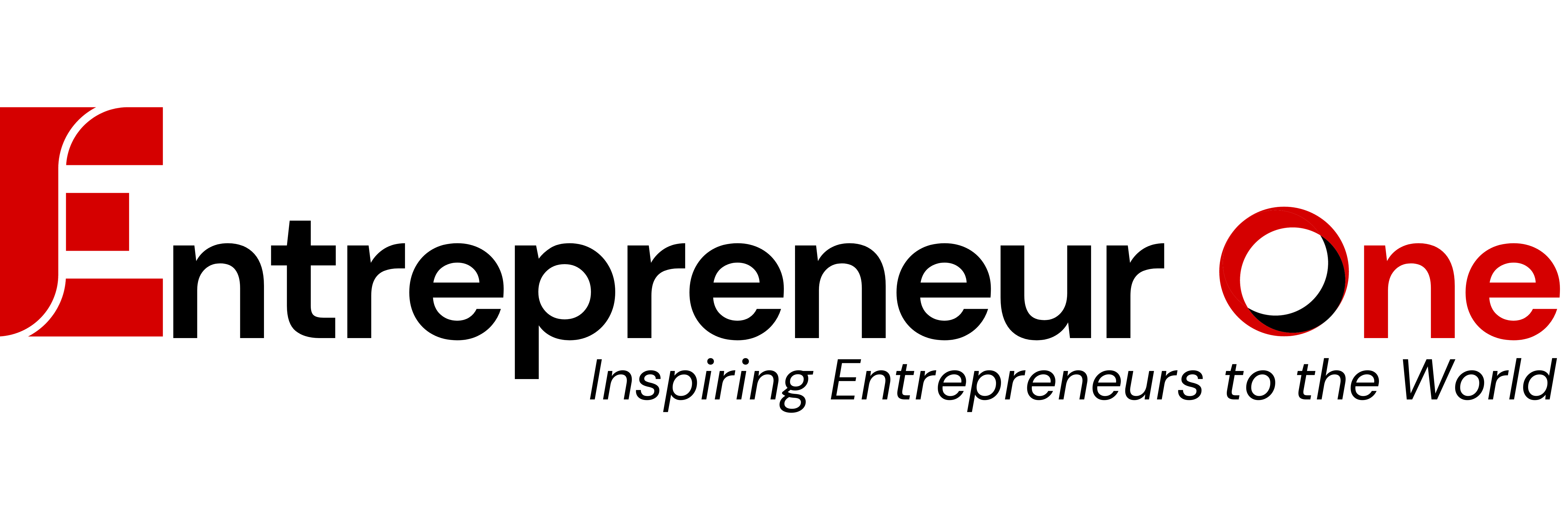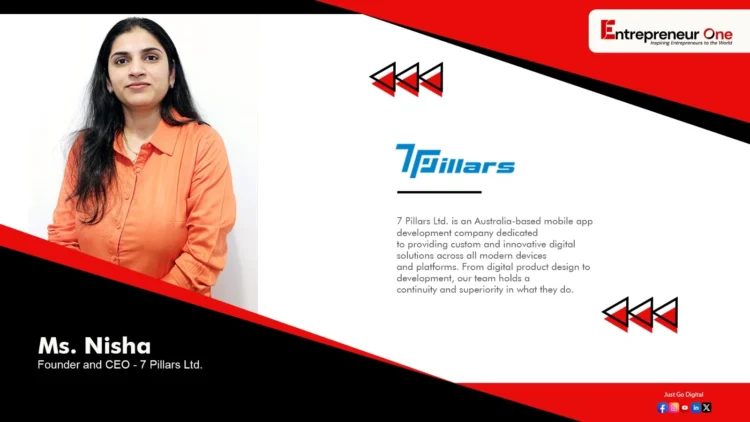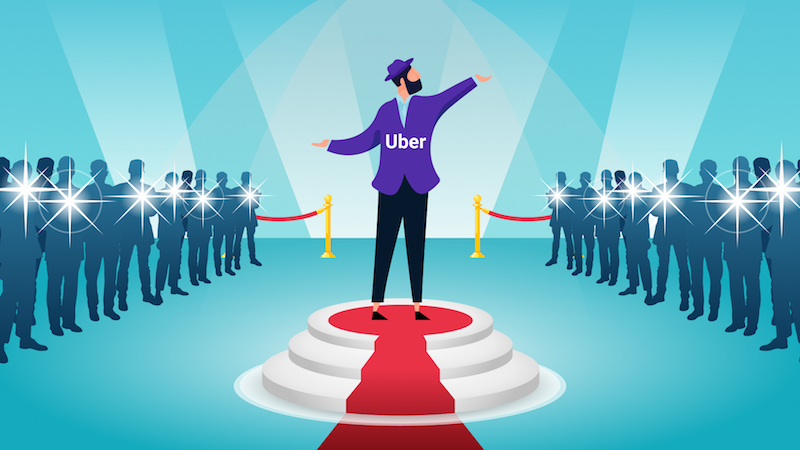In today’s fast-paced digital age, mobile applications are essential for businesses and consumers. To succeed in this competitive landscape, companies must understand user needs, innovate continuously, and plan strategically. In this article, we explore the experiences and strategies of 7 Pillars Ltd., an Australia-based mobile app development company. From their founding principles to future endeavors, we uncover valuable insights for navigating the mobile app industry. Whether you’re a developer, entrepreneur, or tech enthusiast, join us as we delve into the world of mobile app development.
Q. Can you please tell us briefly about your company?
7 Pillars Ltd. is an Australia-based mobile app development company dedicated to providing custom and innovative digital solutions across all modern devices and platforms. From digital product design to development, our team holds continuity and superiority in what they do.
Our top gear is our expertise in the industry which made us deliver more than 600 robust applications in just seven years. We have hand-picked talents that build a smooth ride for our clients while expanding their user base and enhancing their brand value and market reach with an exceptional app. For more than 100 businesses, we set a new benchmark! We not just turn ideas into dynamic projects but also maintain top-notch code standards. To build your own app from scratch and enable high-quality tech integration, book a consultation today.
Q.Tell us about your role and responsibility in the company?
I am the Co-founder and CEO of the company. My key role is to drive the vision and to create strategy for business growth and expansion for the company. With the support of my co-leaders and every individual in the company, 7 Pillars today has become one of the most sought-after mobile app development company in Australia and New Zealand.
Q. Who all are your clients?
Our clients include some of the world’s most innovative and disruptive companies like Byju’s, Airtel, Verse etc. We have been fortunate enough to work with startups who have scaled from an idea of a multimillion dollar business.
While many of us share similar technical skill sets, my approach is distinguished by three key factors:
- User-Centric Design Philosophy: My development process is deeply rooted in user experience (UX) principles. I prioritize understanding the end-users’ needs and pain points from the outset, which helps in designing apps that are not only functional but also intuitive and engaging. This philosophy has consistently resulted in higher user satisfaction and retention rates in my projects.
- Agile Methodology Expertise: I have extensive experience in Agile development environments, which enables me to efficiently manage projects by adapting quickly to changes and continuously delivering value at every stage of the development process. This agility allows for better collaboration with stakeholders and ensures that the final product closely aligns with the client’s goals and user expectations.
- Commitment to Continuous Learning and Innovation: The tech landscape is always evolving, and I make it a priority to stay ahead of the curve by continuously updating my skills and experimenting with new technologies. For example, I’ve recently delved into cross-platform development frameworks like Flutter and React Native, which allows me to deliver robust applications across multiple platforms more efficiently.
These distinct qualities contribute to my unique approach in the mobile app development field, enabling me to deliver superior results and innovative solutions tailored to specific client needs.”
Q. What is the goal of your company, and how are you planning to achieve it?
Our primary goal at “7 Pillars” is to empower businesses to achieve digital transformation through state-of-the-art mobile applications that enhance user engagement and operational efficiency. We aim to become a leader in mobile solutions that not only meet current market demands but also anticipate future trends and technologies.
To achieve this goal, we have set out a comprehensive plan that includes the following strategies:
- Innovation and Research: We continuously invest in research and development to stay at the forefront of emerging technologies. This commitment ensures that we are not just followers but leaders in technology trends like AI integration, machine learning, and blockchain. By leveraging these technologies, we create more intelligent and secure applications.
- User-Centric Development: At the core of our development philosophy is a strong emphasis on user experience (UX). We engage with real users through multiple channels to gather insights and feedback before, during, and after the development process. This approach allows us to build apps that genuinely resonate with users and address their needs effectively.
- Agile Methodologies: We employ Agile methodologies to enhance team performance and project flexibility. This approach facilitates a more collaborative and transparent process with our clients and allows for iterative testing, improvement, and delivery. This not only increases productivity but also ensures that we are adaptable to changes and can deliver high-quality products consistently.
- Strategic Partnerships: Building strong partnerships with other tech companies and platforms enhances our service offerings and broadens our expertise. These collaborations help us deliver more comprehensive solutions and access new technologies and methodologies that further our goal of innovation.
- Focus on Scalability and Security:As mobile devices continue to permeate all aspects of personal and professional life, ensuring that our apps are scalable and secure is paramount. We implement advanced security protocols and scalable architecture to ensure that the apps can handle increased loads and protect user data effectively.
By adhering to these strategies, we are not only progressing towards our goal but also establishing a reputation for quality and reliability in the mobile app development industry.
Q. How are new immersive technologies making a positive impact on enterprises? And what new technologies are you using in your organization?
New immersive technologies, such as virtual reality (VR), augmented reality (AR), and mixed reality (MR), are increasingly making a positive impact on enterprises across various sectors by enhancing how they operate, interact with customers, and train employees. Here are several key areas where these technologies are adding value:
- Training and Development: Immersive technologies are revolutionizing the training landscape in enterprises. For instance, VR can simulate real-world environments where employees, especially in high-risk industries such as manufacturing, oil and gas, and healthcare, can practice and hone their skills without real-world risks. This method has proven to improve retention rates and reduce the time and costs associated with traditional training methods.
- Enhanced Customer Interactions: AR and VR are transforming customer service and sales strategies. For example, AR enables customers to visualize products in their own space before purchasing (as seen in furniture and home décor apps) or try on clothes virtually. This not only enhances the customer experience but also boosts sales and reduces return rates.
- Remote Assistance and Collaboration: With travel costs rising and the push towards more sustainable practices, enterprises are using MR and AR for remote assistance and collaboration. Engineers, for example, can receive real-time guidance and overlay information when repairing complex machinery, reducing downtime and avoiding errors. Similarly, global teams can collaborate in virtual meeting spaces that simulate a shared office environment, enhancing teamwork and productivity.
- Operational Efficiency: Immersive tech can optimize operations through better visualization of data and processes. For instance, in industries like logistics and warehousing, AR can help staff locate items more efficiently, while VR simulations can assist in optimizing layouts and processes before they are physically implemented.
- Product Design and Development: VR and MR allow designers and engineers to create, test, and iterate product designs in a virtual environment. This speeds up the development process, reduces costs associated with physical prototypes, and enables more creative and detailed exploration of new ideas.
- Marketing and Brand Engagement: Immersive technologies offer unique ways to engage customers through interactive marketing campaigns that create memorable experiences. For instance, VR experiences can immerse users in a brand’s world or narrative, leading to stronger emotional connections and enhanced brand loyalty.
- Accessibility Enhancements: AR and VR can also help make workplaces more accessible for people with disabilities, offering alternative ways to engage with work environments and content. For example, AR apps can convert speech or text into visual instructions and guidance for those with hearing impairments.
The impact of immersive technologies is expansive and growing as enterprises continue to explore and invest in these tools. Their ability to create highly interactive, engaging, and efficient experiences is proving to be a game-changer in how businesses operate and compete in the digital age.
Q. What are you looking forward to accomplishing most in 2024?
If I were a mobile app developer setting goals for 2024, I might be looking forward to accomplishing several key objectives that align with current trends and technology advancements in the industry. Here’s an outline of potential focus areas:
- Enhancing User Experience (UX) with AI: Integrating artificial intelligence to personalize user experiences more dynamically. AI can be used to analyze user behavior and tailor app functionalities to individual preferences and needs, enhancing user engagement and satisfaction.
- Adopting New Technologies: Exploring and incorporating newer technologies such as 5G, edge computing, and advanced augmented reality (AR) capabilities into apps. These technologies can significantly improve app performance, enable richer features, and open up new possibilities for mobile applications, such as more immersive AR experiences or faster, more reliable communication tools.
- Improving App Accessibility: Making apps more accessible to a wider range of users, including those with disabilities. This involves implementing inclusive design principles and ensuring that accessibility settings are robust and versatile, helping to reach a broader audience and meet regulatory compliance.
- Enhancing Security Measures: As cyber threats continue to evolve, focus on strengthening app security to protect user data effectively. This could involve integrating advanced encryption techniques, improving authentication processes, and regularly updating security protocols to guard against new vulnerabilities.
- Sustainable Development Practices: Prioritizing sustainability in app development by optimizing app energy usage to extend battery life and reduce energy consumption, and by minimizing the overall digital footprint of apps.
- Cross-Platform Development: Utilizing frameworks like Flutter or React Native to build applications that operate smoothly across multiple platforms (iOS, Android, web) from a single codebase, reducing development time and costs while reaching a larger user base.
- Leveraging Data Analytics: Employing data analytics more effectively to understand how users interact with the app and to drive decisions about app updates and new features. This could help in refining app functionalities and aligning them more closely with user expectations and needs.
- Blockchain Integration: Exploring use cases for blockchain in mobile apps, such as for secure transactions, identity verification, or enhancing transparency in supply chain-oriented apps.
By setting such ambitious and forward-thinking goals for 2024, a developer or a mobile app development company can not only stay ahead in a competitive market but also deliver significant value to users and stakeholders.
Q. What are the new trends you see in the industry today?
The mobile app development industry is continually evolving, influenced by emerging technologies, changing user preferences, and broader socio-economic trends. Here are some of the key trends currently shaping the mobile app development landscape:
- 5G Technology: The rollout of 5G networks is significantly impacting mobile app development. 5G’s faster speeds and lower latency allow developers to create more complex and robust apps that can handle real-time data-intensive operations, such as streaming high-resolution videos, implementing augmented reality (AR), and more interactive and engaging online gaming.
- Artificial Intelligence and Machine Learning: AI and ML are increasingly being integrated into mobile apps, enhancing user engagement and personalization. Features like AI-powered chatbots, voice translations, and predictive analytics are becoming standard in apps, improving user experience and operational efficiency.
- Augmented Reality (AR) and Virtual Reality (VR): With tech giants investing heavily in AR and VR, these technologies are becoming more accessible for mobile app developers. Applications range from immersive gaming experiences and virtual try-ons to practical uses in education, training, and remote assistance.
- Internet of Things (IoT): IoT integration in mobile apps is expanding as more devices become connected. Apps that control smart home devices, healthcare monitoring systems, and wearable technology are in demand, driving developers to create solutions that enable seamless communication between devices and mobile applications.
- Mobile Commerce (mCommerce): As more consumers shop on their mobile devices, apps are increasingly being designed with mCommerce capabilities. This includes integrating various payment gateways, AR-enabled shopping experiences, and personalized shopping through AI.
- Cross-Platform Development Tools: Tools like Flutter and React Native that allow for a single codebase to deploy apps across multiple platforms (iOS, Android, web) are becoming more popular. They reduce development time and costs while maintaining performance and a native-like experience.
- Focus on App Security: With increasing threats to data privacy, developers are prioritizing advanced security measures in mobile apps. This includes implementing stronger data encryption, secure payment integrations, and compliance with global data protection regulations.
- Blockchain Technology: Blockchain is being explored for its potential beyond cryptocurrencies, such as in secure transactions, enhancing data privacy, and preventing fraud in mobile applications.
- Sustainable and Green Apps: There is a growing trend towards developing apps that promote sustainability. This includes apps that help reduce carbon footprints, promote recycling, and manage energy consumption efficiently.
- Wearable and Foldable Device Support: As wearable devices continue to grow in popularity and foldable phones gain market traction, apps are being developed or updated to function seamlessly on these new form factors, providing users with enhanced and tailored experiences.
These trends not only represent the current technological advancements but also reflect the shifting needs and habits of users, ensuring the mobile app development industry remains at the forefront of digital innovation.
Q. What challenges do you have to overcome to get here today? and how you might have overcome them:
- Keeping Up with Rapid Technological Changes: The pace at which new technologies are introduced can be overwhelming. Staying updated requires constant learning and adaptation. Overcoming this challenge typically involves dedicated ongoing education, such as attending workshops, webinars, and conferences, as well as active participation in developer communities.
- Resource Limitations: Whether it’s time, budget, or human resources, limitations are a common challenge. Efficient project management, prioritizing tasks, and using agile methodologies can help in maximizing the resources available and keeping projects on track.
- User Engagement and Retention: Creating apps that not only attract users but also keep them engaged is a significant challenge. This often requires a deep understanding of target user demographics, effective UX/ UI design, and incorporating features that add real value to users’ lives.
- Security Threats: As cyber threats evolve, ensuring the security of mobile applications and user data remains a critical challenge. Implementing robust security measures, regular security audits, and staying informed about the latest security protocols are essential practices to overcome this issue.
- Cross-Platform Compatibility: Developing apps that offer seamless functionality across various platforms and devices can be daunting. Using cross-platform tools and extensive testing across devices helps address compatibility issues.
- Regulatory Compliance: Navigating the complex landscape of legal and regulatory requirements is another hurdle. This includes data protection laws like GDPR or health and safety standards, depending on the app’s nature. Regularly updating knowledge and possibly consulting with legal experts can help in compliance.
- Market Competition: Standing out in a saturated market is tough. Overcoming this might involve identifying unique value propositions, focusing on niche markets, or leveraging cutting-edge technologies to offer something new.
- Scalability Issues: Developing an app that performs well with a few users but struggles under larger loads is a common issue. Planning for scalability from the start and choosing the right backend infrastructure that can grow with your app is crucial.
- Cultural and Language Barriers: For apps targeting global markets, cultural and language differences can pose significant challenges. Overcoming these often involves localizing content and understanding cultural nuances to ensure the app is relevant and appealing across different regions.
- Balancing Quality and Speed: Delivering high-quality apps quickly to meet market demands is a persistent challenge. Implementing automated testing, CI/CD pipelines, and agile development practices can help balance these demands.
Q. What does success looks like to you?
Some of the key success criteria based on company goals and vision are as follows:
- User Satisfaction and Engagement: High user satisfaction, demonstrated through positive app reviews, high ratings in app stores, and strong user engagement metrics (like daily active users), indicates that the apps are well-received and fulfill user needs.
- Revenue and Profitability: Financial success is a clear indicator. This includes steady revenue growth, profitability from app sales, in-app purchases, subscriptions, or ad revenue. Success might also involve
securing significant funding rounds for startups or robust sales figures for established companies. - Innovation and Market Leadership: Being recognized as a leader in the field, especially in terms of innovation, is a significant marker of success. This could be achieved through pioneering new technologies, winning industry awards, or being cited in influential tech publications.
- Scalability and Expansion: The ability to scale solutions effectively to accommodate more users or branch into new markets and regions. Success could also be seen in expanding the product line to include new apps or features that address a broader range of needs.
- Client Acquisition and Retention: For companies focusing on bespoke app development, success might look like a growing portfolio of high-profile clients, high rates of client retention, and strong client referrals.
- Employee Satisfaction and Retention: A successful company fosters a positive, inclusive, and dynamic work environment where employees are happy, productive, and engaged. High employee retention rates and being recognized as a top place to work are indicators of success in this area.
- Operational Efficiency: Streamlined processes, high productivity, and minimal downtime. Implementing effective project management and development methodologies that lead to on-time and within-budget delivery are key performance indicators.
- Compliance and Security: Maintaining a reputation for stringent security and compliance, especially in apps dealing with sensitive user data, can be crucial for success, particularly in fields like finance or health care.
- Impact and Social Responsibility: For some companies, success is also about making a positive impact on society. This could involve developing apps that solve real-world problems, contribute to societal well-being, or promote sustainability.
- Adaptability and Resilience: The ability to adapt to changing market conditions, technological advancements, and consumer preferences, and to recover quickly from setbacks, are important measures of a resilient and successful company.
Q. As a leader of your organization, what important decisions do you make for the company?
As a leader of the company and after detailed consultation with my teams/ experts, I decided to explore niche markets as well, specializing in specific types of apps (e.g., gaming, crypto), and to expand into emerging technologies like Blockchain, AR, VR, or AI.
Q. How do you encourage people working in your organization?
Encouraging and motivating people in an organization is crucial for fostering a positive work environment, promoting productivity, and retaining talent. Some of the key ones we at 7 Pillars follow are:
- Recognition and Appreciation: We regularly acknowledge and appreciate the contributions of employees via various means like publicly in team meetings, and through personalized thank-you notes. We are also implementing an employee recognition program that will reward outstanding performance.
- Open Communication: We at 7 Pillars foster an environment where open communication is encouraged and valued. We listen to employees’ ideas, concerns, and feedback, and take appropriate action to address them. We regularly communicate company goals, updates, and successes to keep everyone informed and engaged.
- Professional Development Opportunities: We also support employees’ professional growth by providing opportunities for training, skill development, and career advancement. This includes workshops, seminars, mentorship programs, and financial assistance for further education or certifications.
- Work-Life Balance: We definitely encourage a healthy work-life balance by offering flexible work arrangements, paid time off, and initiatives to promote employee well-being. We also recognize the importance of mental health and encourage employees to prioritize self-care and relaxation.
- Team Building Activities: We organize team-building activities and social events to foster camaraderie and strengthen bonds among team members. This includes team lunches, off-site retreats, or virtual team-building games.
Q. What are the new strategies you have adopted for your business?
As a mobile app development business, staying competitive and relevant in a rapidly evolving industry requires adopting new strategies to adapt to changing market trends and technological advancements. Here are some new strategies that we’ve recently adopted:
- Focus on User-Centric Design: We’ve intensified our focus on user-centric design principles, placing the user experience at the forefront of our development process. This involves conducting thorough user research, gathering feedback, and iterating designs based on user preferences and behaviors to create more intuitive and engaging mobile apps.
- Agile Development Methodologies: We’ve embraced Agile development methodologies more comprehensively to enhance collaboration, flexibility, and responsiveness in our development process. This approach allows us to adapt quickly to changing requirements, deliver incremental value to clients, and ensure timely project delivery.
- Investment in Emerging Technologies: We’ve increased our investment in emerging technologies such as augmented reality (AR), virtual reality (VR), and machine learning (ML) to offer innovative solutions and differentiated app experiences to our clients. Exploring these technologies enables us to stay ahead of the curve and deliver cutting-edge solutions that meet evolving market demands.
- Cross-Platform Development: We’ve adopted cross-platform development frameworks like Flutter and React Native to streamline the development process and deliver high-quality mobile apps across multiple platforms (iOS, Android, web) more efficiently. This approach allows us to reduce development time and costs while maintaining performance and a native-like user experience.
- Data-Driven Decision Making: We’ve strengthened our focus on data-driven decision-making by leveraging analytics and user insights to inform our development strategies. Analyzing app usage patterns, user feedback, and performance metrics enables us to make informed decisions, optimize app features, and drive continuous improvement.
- Enhanced Security Measures: Given the increasing importance of data security and privacy, we’ve implemented enhanced security measures in our mobile apps to protect user data effectively. This includes implementing robust encryption techniques, secure authentication mechanisms, and regular security audits to mitigate potential risks.
- Partnerships and Collaborations: We’ve expanded our network of partnerships and collaborations with other technology companies, startups, and industry experts to leverage complementary expertise and resources. These partnerships enable us to access new markets, explore joint innovation initiatives, and deliver more comprehensive solutions to our clients.
- Sustainability Initiatives: We’ve integrated sustainability initiatives into our business practices by adopting eco-friendly development processes and promoting energy-efficient app design principles. By prioritizing sustainability, we aim to reduce our environmental footprint and contribute to a more sustainable future.
By adopting these new strategies, we’re positioning our mobile app development business for continued growth, innovation, and success in a competitive market landscape.
Q. What are some of your future endeavors?
We have very heavily invested in R&D and we have got breakthroughs in creating some exceptionally amazing AR/VR apps which have great use cases. We are expanding the horizon and exploring how we can make AI accessible to every client that we work with.
Q. What is the best advice you can give to our readers?
Focus on solving real problems and adding genuine value to users’ lives. In the ever-evolving landscape of mobile apps, success comes not from chasing trends or gimmicks, but from understanding your users’ needs deeply and delivering solutions that address those needs effectively. Prioritize user experience, iterate based on feedback, and always strive for simplicity and usability. By staying true to this principle, you’ll build apps that resonate with users, foster loyalty, and stand the test of time.
And never forget to give time to your friends and family, work life balance is key in whatever you do.
Q. Is there anything else you would like to share with us?
Certainly! Here are a few additional insights and tips that might be helpful for mobile app development
- Stay Agile and Adaptive: Embrace flexibility in your approach to development and be open to experimentation and innovation.
- Invest in Your Team: Your team is your most valuable asset. Invest in their professional development, provide opportunities for growth, and create a supportive and inclusive work culture where everyone feels valued and empowered to contribute their best work.
- Prioritize Quality and Security: Quality and security should never be compromised. Implement rigorous testing protocols, adhere to best practices in software development, and prioritize security measures to protect user data and maintain trust in your brand.
- Build Strong Relationships: Cultivate strong relationships with clients, partners, and stakeholders. Listen to feedback, address concerns promptly, and strive to exceed expectations in every interaction.
- Embrace Continuous Improvement: Never settle for mediocrity. Strive for continuous improvement in all aspects of your business, from development processes and product quality to customer service and organizational efficiency. Encourage a culture of learning,
- Think Long-Term: While short-term wins are important, always keep the long-term vision in mind. Make strategic decisions that align with your company’s goals and values, and invest in initiatives that will contribute to sustainable growth and success over time.
And again enjoy what you are doing and work life balance should never be compromised.















